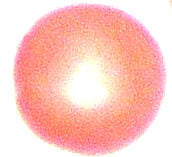What is Sickle Cell Disease?
Sickle Cell Disease results from red blood cells that, instead of being round, have a shape resembling a farmer’s sickle.
The abnormal shape of these red blood cells is due to the presence of an abnormal protein, called sickle (S) hemoglobin(Hb) inside the cells, instead of the normal protein called Hb A. Hemoglobin is the substance that transports the oxygen in the air, which we breathe in, to all parts of our body.
Sickled red blood cells cannot flow well and may impair normal blood circulation, resulting in shortage of oxygen in the body tissues.
When blood circulation is blocked it can lead to acute attacks of intense pain throughout the body, especially the bones, and can result in damage to body organs.
How do you get Sickle Cell Disease?
Each of our biological characters (in this case HbS) is determined by a copy of a gene that is passed down from one generation to the next. But for sickle cell disease (SCD), also known as sickle cell anemia, two copies of the HbS gene, one from each parent, must be inherited.
Who gets Sickle Cell Disease, then?
Getting sickle cell disease is like a lottery, really. First, it requires that both parents carry the responsible gene.
Next, if both parents transmit the gene, then the child will get SCD. That is a fact of biology that cannot be helped.
If, on the other hand, only one parent transmits the gene, then the child will inherit only the “trait.” In that case, that child, too, will become a carrier and will be able to transmit the gene to his/her children also. But if, in having a child, his/her partner also transmits the same gene that child will get SCD.
And someone with SCD is also a carrier, obviously. A double one, if you like.
Here, the odds are shortened, meaning that the children will always get a sickle cell gene from such a parent. The outcome, however, depends on whether the other parent also caries the sickle cell gene. If the partner doesn't, then the odds lengthen and the worst-case scenario is that all the children will have just the trait, without disease.
But if the partner also has the HbS trait then the odds are shortened again and some of the children (half) will have the disease and the other half will be merely carriers without disease.
And if the partner also has SCD then it is a dead cert that all of the children, without exception, will also have SCD.
Where does sickle cell occur?
SCD occurs in many different regions of the world including the Middle East, Greece, Italy and India. However, it is most common in Africa and among people of African descent, wherever they live.
How is SCD treated?
Unfortunately, there is, as yet, no universally available cure for SCD. However, there are many ways by which the potential problems it causes can be reduced. To find out more, speak to your doctor.
How do you prevent Sickle Cell Disease?
Because SCD can only be inherited, considering prevention is already too late when a baby is born. And so the only way SCD can be prevented is by making sure that you and your partner are not both carriers of the responsible gene.
So you and your partner must get tested for the gene before you make a decision about having children. The results of the test will help guide you and your doctor as to the potential outcomes.
In this clip, Tunu Roberts interviews Professor FID Konotey Ahulu:
THE SIERRA LEONE SICKLE CELL DISEASE SOCIETY
 | ||||||

